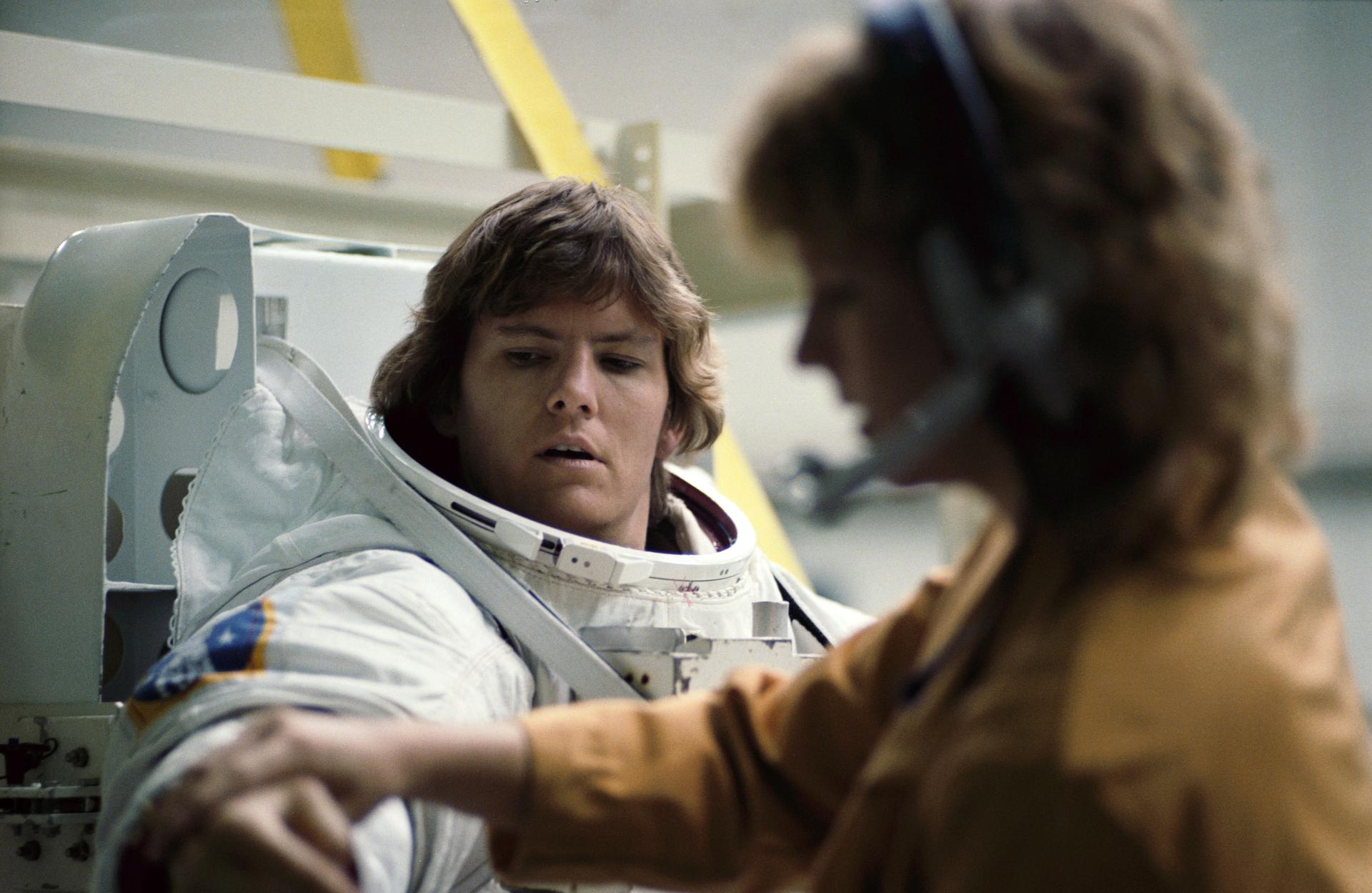STS-41G - NASA (original) (raw)
STS-41G Mission Facts
Mission: Earth Radiation Budget Satellite, Office of Space and Terrestrial Applications-3
Space Shuttle: Challenger
Launch Pad: 39A
Launch Weight: 242,780 pounds
Launched: October 5, 1984 at 7:03:00 a.m. EDT
Landing Site: Kennedy Space Center, Florida
Landing: October 13, 1984 at 12:26:38 p.m. EDT
Landing Weight: 202,266 pounds
Runway: 33
Rollout Distance: 10,565 feet
Rollout Time: 54 seconds
Revolution: 133
Mission Duration: 8 days, 5 hours, 23 minutes, 38 seconds
Orbit Altitude: 218 nautical miles
Orbit Inclination: 57 degrees
Miles Traveled: 3.3 million
Crew
Robert L. Crippen, Commander
Jon A. McBride, Pilot
David C. Leestma, Mission Specialist
Sally K. Ride, Mission Specialist
Kathryn D. Sullivan, Mission Specialist
Paul D. Scully-Power, Payload Specialist
Marc Garneau, Payload Specialist
Mission Highlights
This was the first flight to include two women, Ride and Sullivan. Sullivan was the first American woman to walk in space. The Earth Radiation Budget Satellite (ERBS) was deployed less than nine hours into the flight. The Office of Space and Terrestrial Applications-3 (OSTA-3) carried three experiments in the payload bay. Components of Orbital Refueling System (ORS) were connected, demonstrating it is possible to refuel satellites in orbit. Other Payloads were: Large Format Camera (LFC); IMAX Camera, flying for the third time; a package of Canadian Experiments (CANEX); Auroral Photography Experiment (APE); Radiation Monitoring Equipment (RME); Thermoluminiscent Dosimeter (TLD); and eight Get Away Specials.
Resources
STS-41G Press Kit
Get an overview of the STS mission, its crew and activities during this mission.
Flights of Challenger
An overview of this shuttle's flights.
35 Years Ago: STS-41G – A Flight of Many Firsts
The 13th flight of the Space Shuttle program, STS-41G was notable for many firsts and records. It was the first…

Keep Exploring